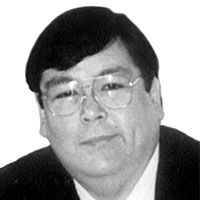Filipinos still clueless who really wanted martial law

Forty years after the imposition of martial law in the Philippines, in accordance with Presidential Proclamation 1081, dated September 21, 1972, and most Filipinos are still clueless who the real mastermind was.
Most Filipinos think that it was Dictator Ferdinand E. Marcos and the perceived motivation for this was in order to extend his reign beyond December 30, 1973. However, if Marcos is to be believed, it was the United States who wanted martial law in the Philippines in 1972.
Now, likely you will think that the suggestion is absolutely preposterous and that Marcos — who is known to lie — was merely covering his tracks with that assertion. However, it’s undeniable that the US has a track record of supporting dictatorships in Latin America and Asia. It would be good to review the declaration of martial law from a larger perspective; one that overrides the popular belief that Marcos simply wanted to extend his term beyond 1973.
There’s no denying the dark, Machiavellian side of US history that has made many nations very wary and suspicious of its foreign policy — the US inclination to create and support dictatorships in the pursuit of its geopolitical agenda.
Per the late eminent Professor Emmanuel Q. Yap, founder of the People’s Patriotic Movement (PPM) and perhaps the most knowledgeable resource person on true Philippine contemporary history and what really happened here during the East-West Cold War, Marcos made the assertion that the he simply complied with US wishes in imposing martial law during a meeting in 1972 at Malacañang Palace with former House Speaker Jose “Pepito” Laurel Jr.
Shortly after martial law was declared, Speaker Laurel asked Prof. Manoling Yap to accompany him to the said Palace meeting with Marcos. Marcos was known to be very close to the Laurels. Marcos felt that he owed his Supreme Court murder charge acquittal to the then Supreme Court Chief Justice (and later Japanese Occupation Philippine President) Jose Laurel Sr.
It was Speaker Pepito Laurel who brought Marcos into the Nacionalista Party (NP) and paved the way for his nomination as NP Official Candidate for the 1965 Presidential Election that Marcos won over incumbent President Diosdado Macapagal.
In that Palace meeting, Laurel asked Marcos: “Brod, why did you have to declare martial law?” According to Manoling Yap, Marcos replied: “Brod, kung hindi ako nag-declare ng martial law, ako ang papatayin ng mga Amerikano. (Brod, if I didn’t declare martial law, the Americans will kill me).”
According to Prof. Yap, no Filipino in 1972 knew how to conceptualize, plan and implement martial law and that the blueprint for this dark chapter of our history was drafted by the US for Marcos in South Korea and was personally hand carried to Marcos by a cabinet member who was very close to the US.
Let me be clear on this issue — I do not believe that what Marcos told former Speaker Pepito Laurel was the whole truth. I do believe though that the US wanted to install a dictatorship here just as Marcos himself wanted to be the dictator.
Just why would the US, which prides itself as a shining light of democracy in the world, want to install a dictatorship in the Philippines?
It’s because of the then great American fear of the Domino Theory happening in Asia after the US lost South Vietnam to the Communists.
In Asia, Communism expanded from China to North Korea, Vietnam, Cambodia and Laos. In the Americas, it took its roots in Cuba when Fidel Castro ousted US-backed dictator Fulgencio Batista and then was poised to export the ideology to Central and South America with Che Guevara as point man.
For a supposed ‘shining light of democracy’ in the world, it’s unbelievable how many dictators — many of them murdering tyrants — the US had supported during the 1960s and 1970s, at the height of the Cold War.
To rattle off some of these US-supported dictators, there were Papa Doc and Baby Doc Duvalier of Haiti, Augusto Pinochet of Chile, Anastasio Somoza of Nicaragua, Jose Rafael Videla of Argentina, Anwar Sadat and Hosni Mubarak of Egypt, Alfredo Stroessner of Paraguay, the Shah of Iran, Hugo Banzer of Bolivia, Manuel Noriega of Panama, Rafael Trujillo of the Dominican Republic, Castelo Branco of Brazil, Castillo Armas of Guatemala, Fulgencio Batista of Cuba, Park Chung-Hee of South Korea, Suharto of Indonesia and not the least of all — Marcos of the Philippines. This American practice of supporting dictatorships was best rationalized when US President Franklin D. Roosevelt said: “He may be a son-of-a-bitch but he’s our son-of-a-bitch.”
When a country becomes poorer, it tends to veer Left and when it becomes richer — it tends to veer Right. Most of the countries where the US had supported dictators were poor or have large segments of their population living below the poverty line, therefore vulnerable.
The US sponsorship of dictatorships is not just confined to the fight against Communism. The US will create and support any dictator who can serve its geopolitical agenda. The US and China are now locked in a desperate race for the last remaining sources of energy. We Filipinos are right in the middle of that dreaded confrontation.
* * *
Shakespeare: “Madness in great ones must not unwatched go.”
Chair Wrecker e-mail and website: [email protected] and www.chairwrecker.com
- Latest
- Trending



























